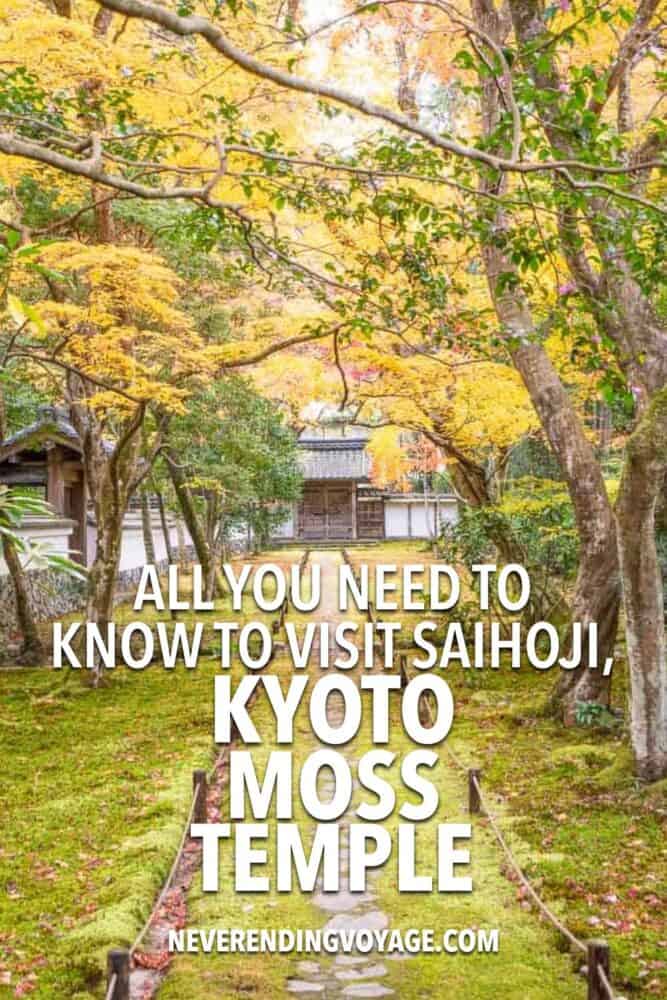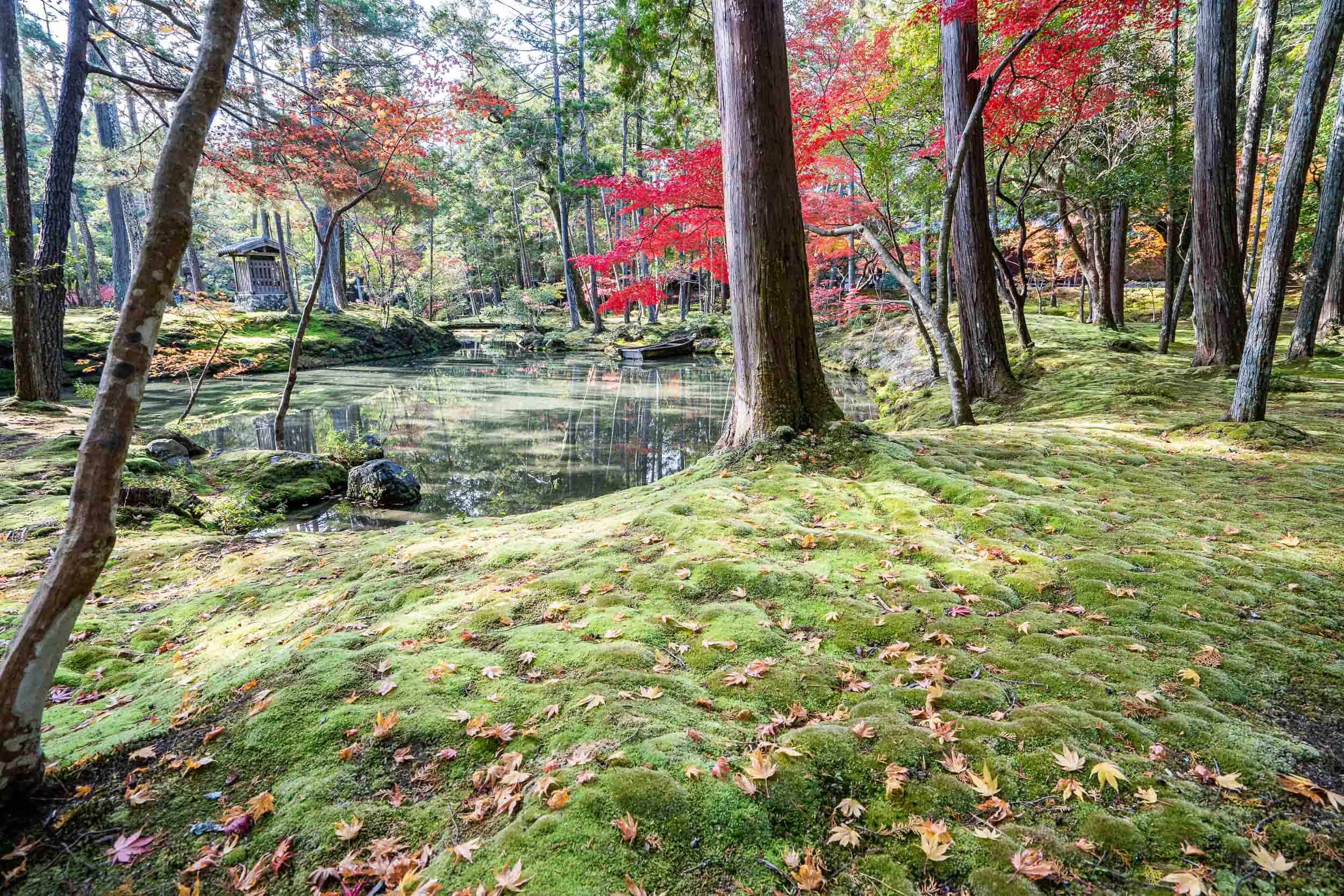This page contains affiliate links. Please read our Disclosure Learn more.
Saihoji Temple is our new favorite temple in Kyoto. Nicknamed Kokedera or Moss Temple, this beautiful place has a garden covered in vibrant green moss.
You must make a reservation at Kyoto Moss Temple, but that means the crowds are smaller than at other popular temples in the city.
We found the experience to be so calming and relaxing, especially when you begin your visit by copying scripture to calm your mind.
In this guide to Saihoji Temple, I explain how to make a reservation, provide directions to the temple, and share photos from our visit.
content
About Saihoji Temple
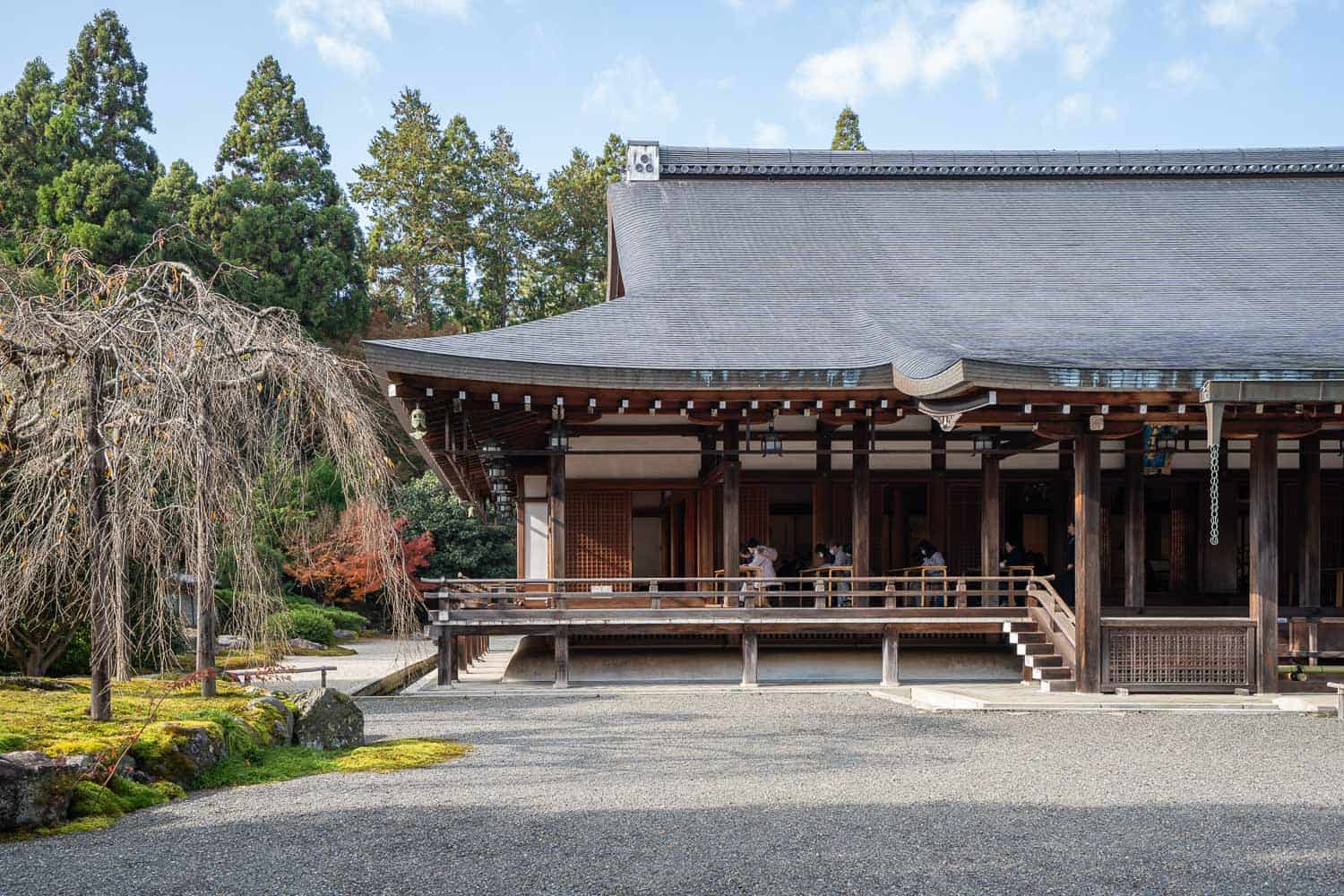

Saihoji Temple is a Rinzai Zen Buddhist temple dating back to 731.
In 1339, the eminent monk and gardener Wuzong Guoshi restored the then-neglected temple into a Zen temple for the Rinzai sect.
Saihoji’s gardens have inspired the design of many famous Japanese gardens, including Kinkakuji and Ginkakuji (Golden Pavilion and Silver Pavilion).
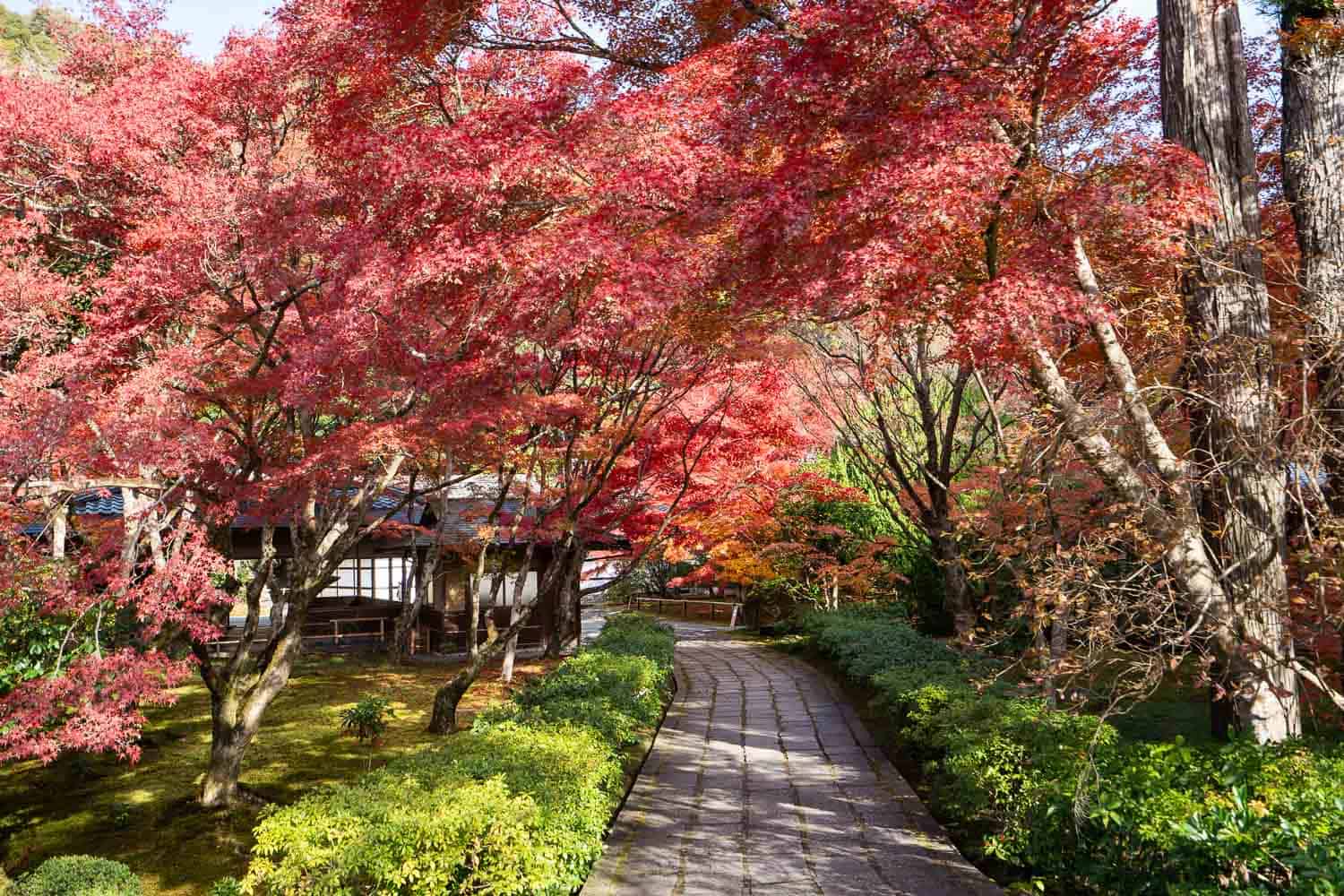

The temple was destroyed several times by fires and floods, and was rebuilt several times. This damage (and subsequent neglect) eventually caused moss to grow and it took over 100 years to completely cover the garden.
In 1994, Saihoji Temple was listed as a World Heritage Site by UNESCO as part of the historical monuments of ancient Kyoto.
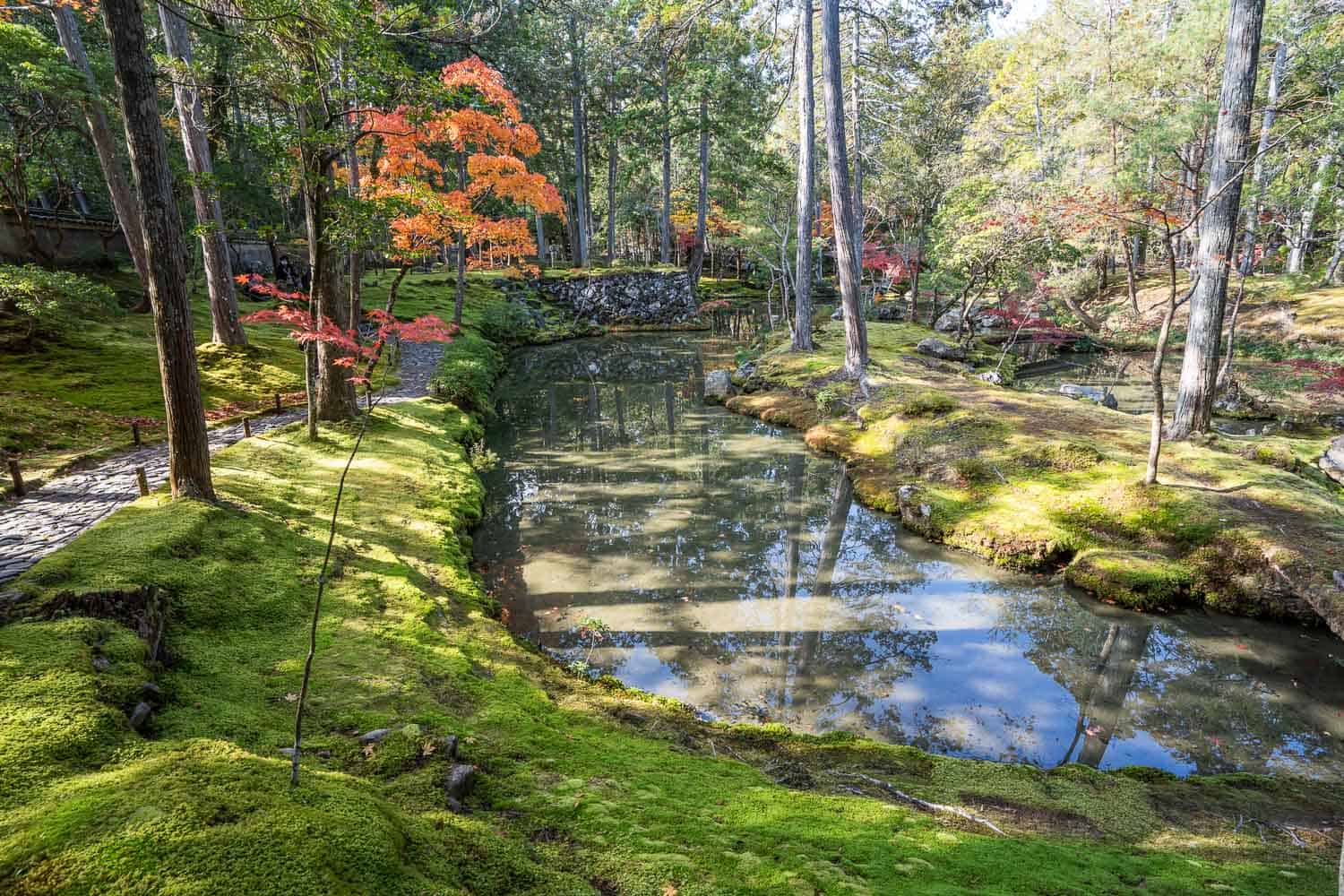

How to make a reservation at Saihoji Temple/Kodera Temple
Saihoji Temple requires all visitors to make reservations in advance to limit the number of visitors and protect the moss.
When I went to Kyoto before, I was put off by the reservation system which required sending a postcard, but luckily you can now book online.
Reservations are open two months in advance until 11:59pm (JST) the day before your visit.
You may find availability at the last minute, but I recommend booking as far in advance as possible, especially during peak seasons like November.
Opening times vary so please check the booking calendar on the website.
To book, please go to Three factions page every day At Saihoji website and create an account.
Admission is 4,000 yen ($26), plus a reservation fee of 110 yen ($1) per person. This is much more expensive than other temples in Kyoto, but does include a pen.
You can only book for a maximum of two people. Visitors must be 13 years or older to visit.
I recommend booking a 9.30am or 10am entry time (we went at 10am) so you can spend the rest of the day nearby Arashiyama.
No need to print your tickets – you can show the QR code on your phone at the gate (we’ll email you a link). You may be asked to show ID, but we don’t.
Cancellation fees are:
- up to 4 days ago – Free.
- 1 – 3 days ago – 50% fee.
- On the day of visit – 100% (no refunds).
Where is Taiji Temple in Kyoto?
Saihoji Temple is a bit out of the way in western Kyoto, but not too far from the Arashiyama area where there is plenty to do (see my Kyoto Guide ideas). It’s easy to combine the two.
Located at 56, Matsuo Kamiyacho, Saikyo-ku, Kyoto City. See google maps location.
How to get from central Kyoto to Saihoji Temple
From the center of Kyoto to Saihoji Temple, you can take the Hankyu Railway from Kawaramachi Station arrive Guizhan (11 minutes) then transfer to Shanggui Station (2 minutes).
From there it’s a 20-minute walk through quiet neighborhoods. We arrived early so we stopped at Jizoin (500 yen/$3 USD) A hidden gem down the road with a lovely bamboo forest.
You can also search for alternative transportation routes on Google Maps. You can catch a bus from the following locations Kyoto Station All the way to Saihoji Temple, but it takes at least an hour and is likely to be crowded.
From Saihoji Temple to Arashiyama
From Kyoto Taiji Temple to Arashiyama, you can take a bus, taxi or walk for 45 minutes.
Just a few minutes away from the bus station (Kodera Suzuji Temple on Google Maps) and Bus 63 or 73 Go to Arashiyama.
As taxis were waiting near the bus station, we decided to take a taxi to save time.
The ride takes 15 minutes and costs 1,500 yen ($10). I recommend getting off the bus early Togetsukyo bridge Avoid driving on crowded main streets.
Xifangji Temple Copying Scriptures
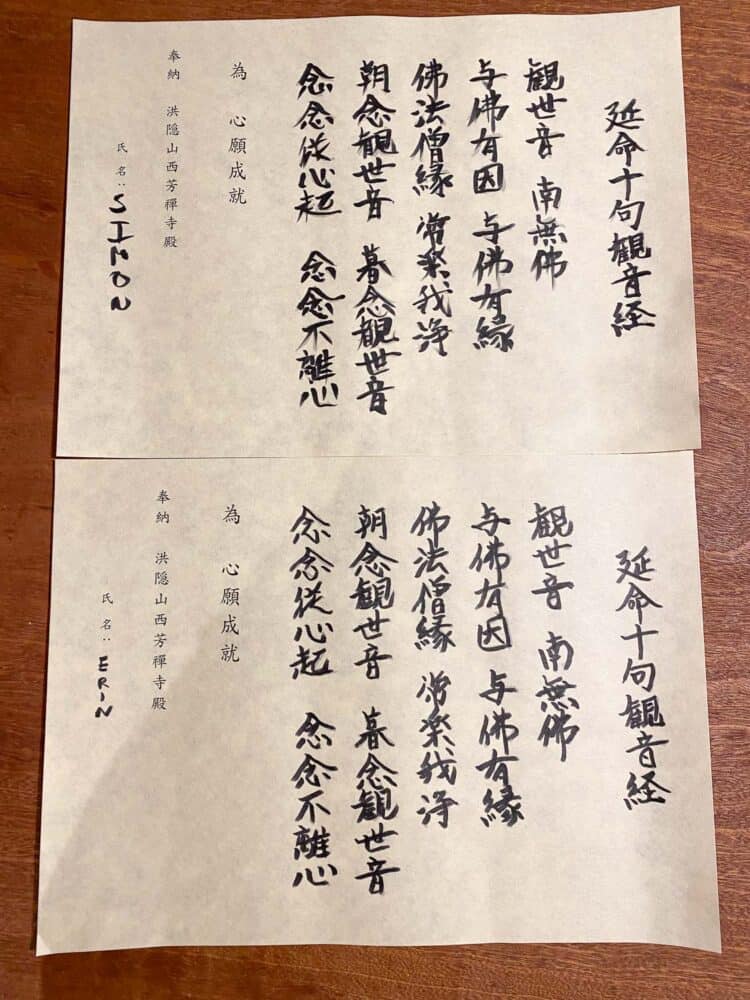

Every visit to Saihoji Temple starts with the main hall, where you can copy sutras (Buddhist prayers written in Japanese).
The idea is that focusing on copying can calm you down and prepare you for a visit to the garden. This trick worked, and everyone walked around the garden quietly.
When you enter the temple, you will be given a calligraphy pen (keep it for yourself), and Buddhist scriptures are also ready in the main hall.
Before entering the sutra hall, you will find the toilet in the main hall. Please take off your shoes before entering the lobby and put on the provided slippers.
You can choose to sit on stools at a higher table in the porch, or on the floor at a low table in the main part of the temple.
Photography and talking are not allowed.
I’m a little nervous, but it’s not difficult to copy the scriptures. Just trace the Japanese text with a pen.
The instructions are in English and no one pays attention to what you are doing. You don’t even need to complete it, but we completed ours in about 15 minutes.
You can then carry the sutra with you or give it as an offering.
This is a lovely and calming way to start your visit.
Explore Saihoji Moss Garden
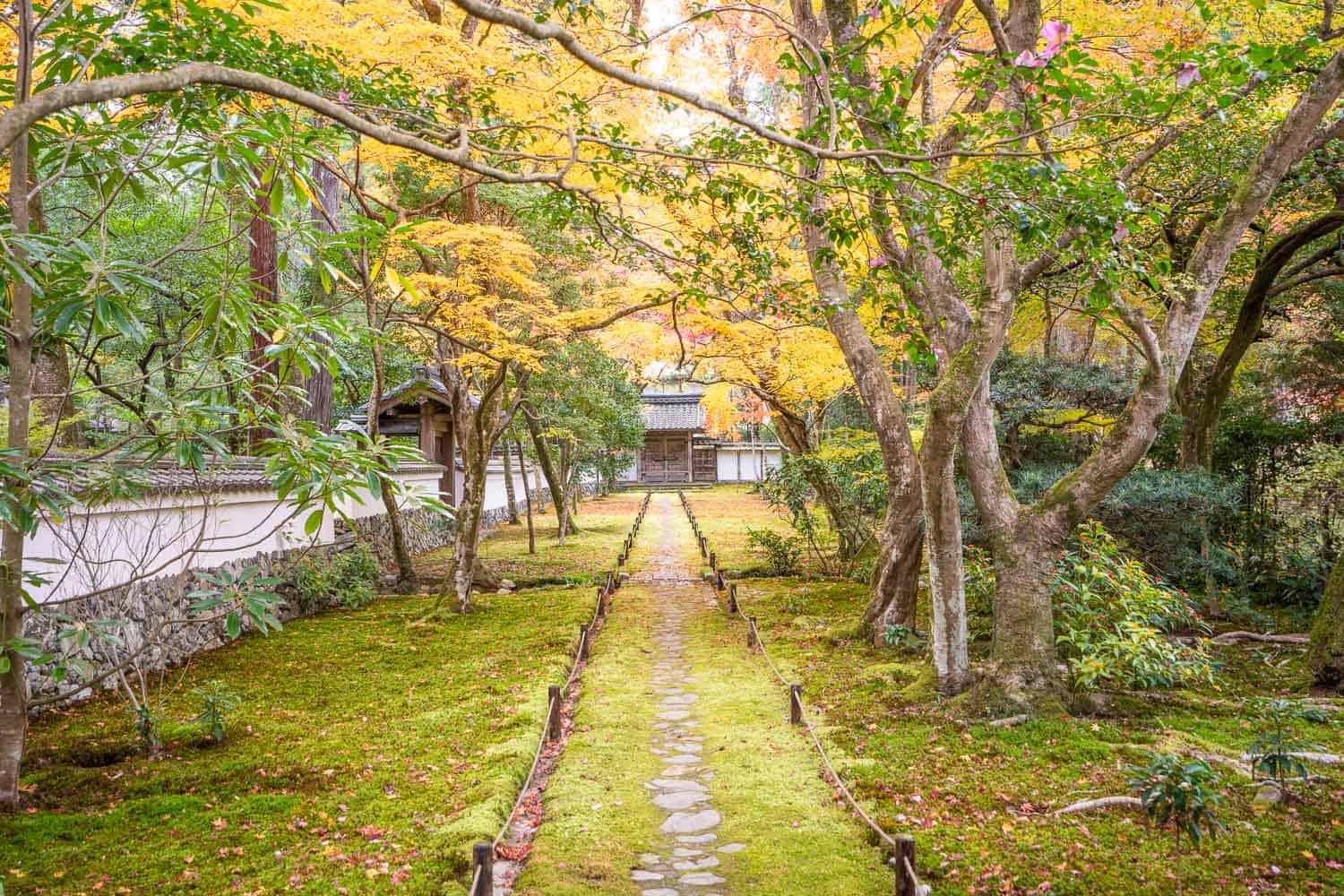

After reading the sutra, you can leave and explore the moss garden at your own pace.
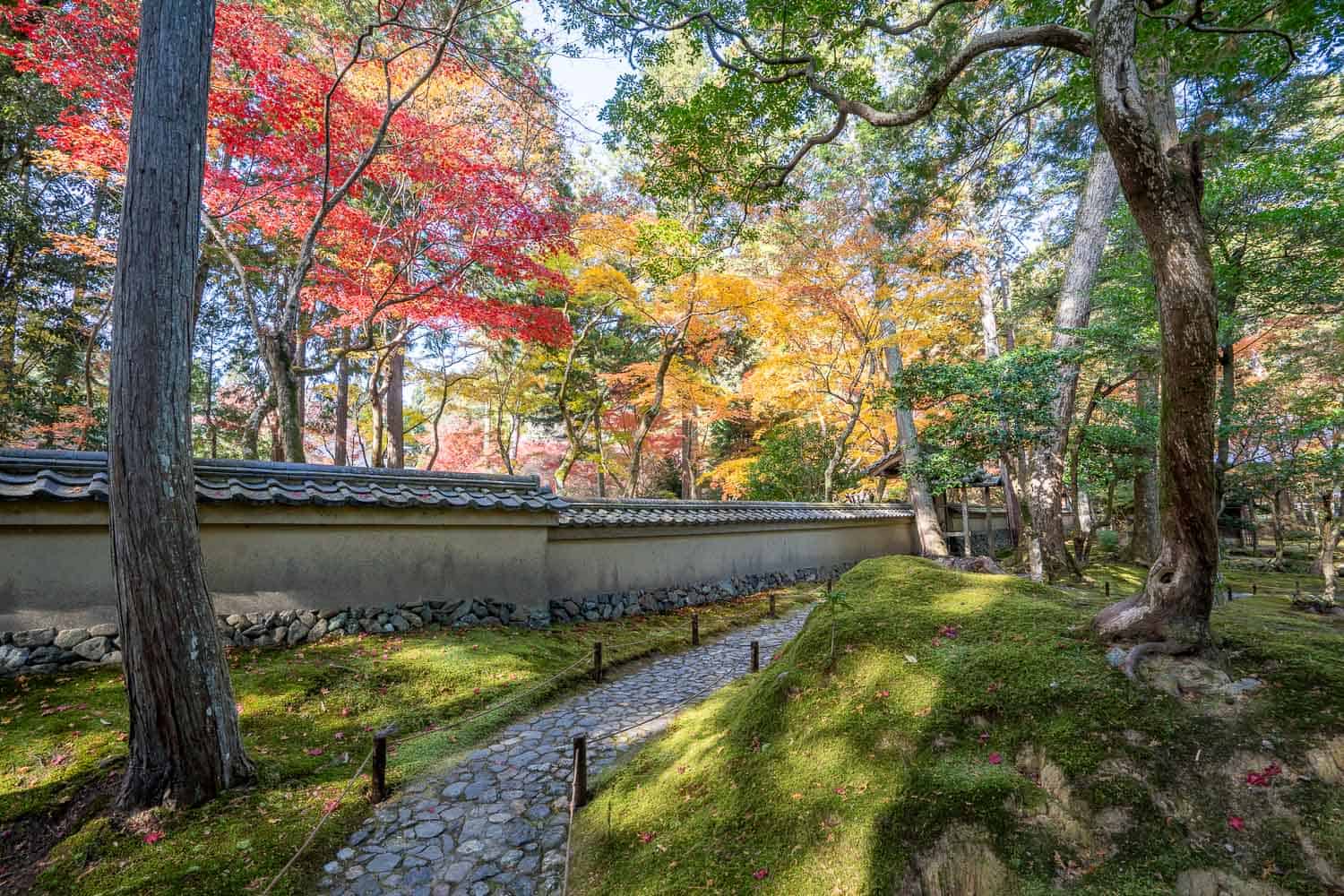

The lower garden is a strolling garden surrounding a large pond known as Ogonchi (Golden Pool).


This route takes you along a stone path around the pond, where you can enjoy views of the moss-covered banks. To avoid damaging the moss, do not walk on it.
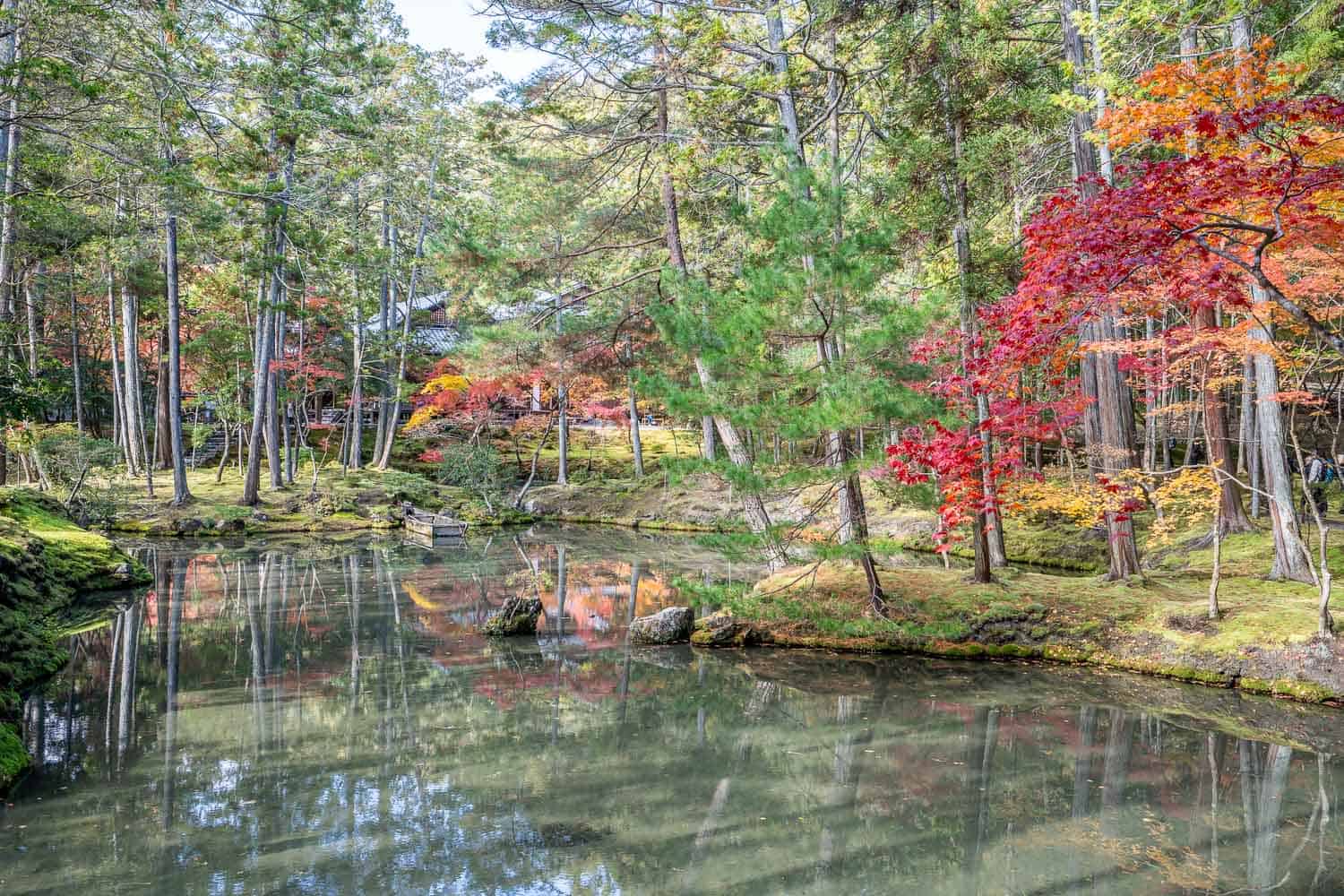

There are 120 species of moss in the garden, creating a carpet of gold to bright green that looks especially lovely in the dappled sunlight.


It’s such a beautiful place and it felt special to be able to enjoy it without the crowds. Everyone was quiet and enjoying the tranquility.
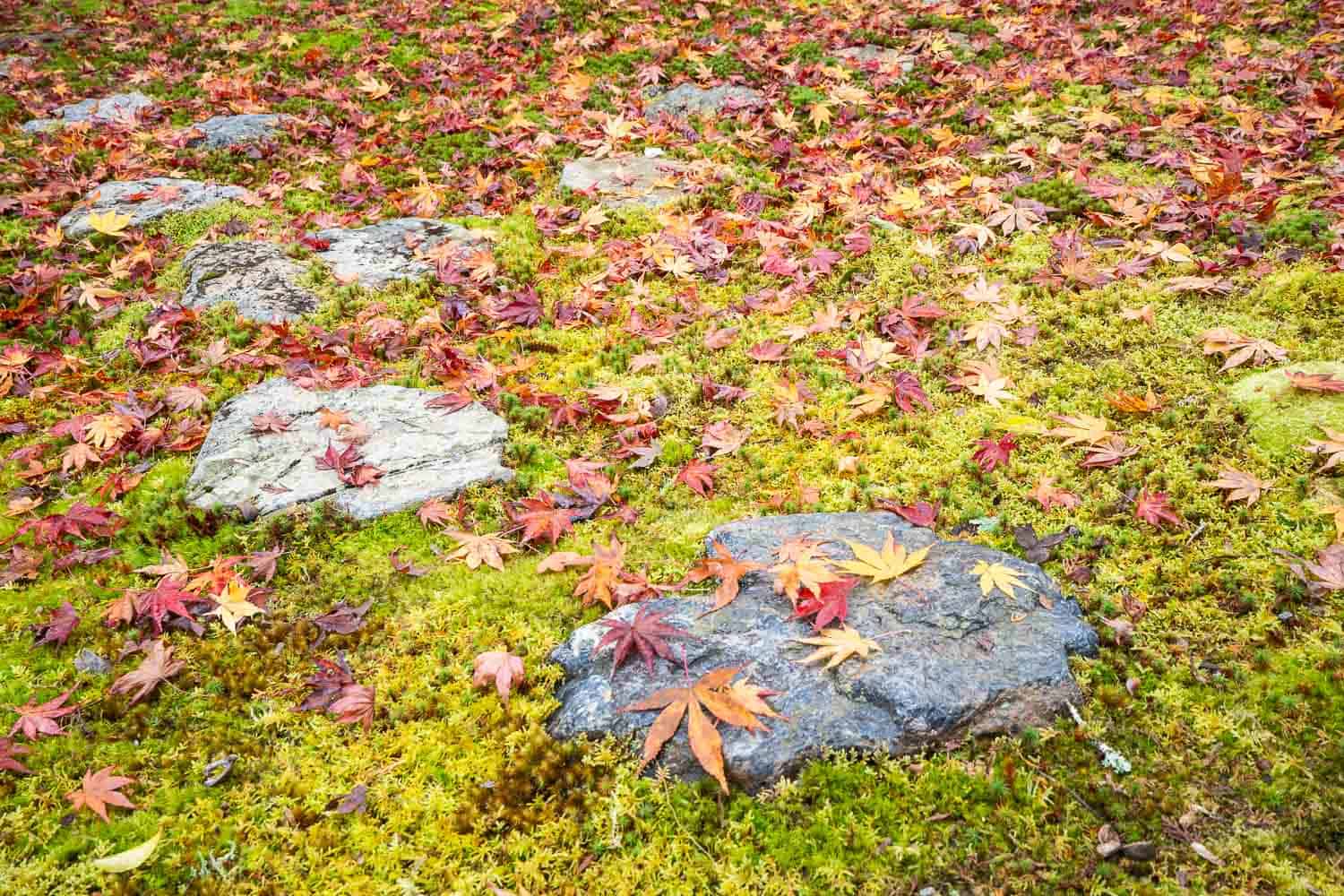

In late November we enjoyed the contrast of yellow and red maple trees with green moss.
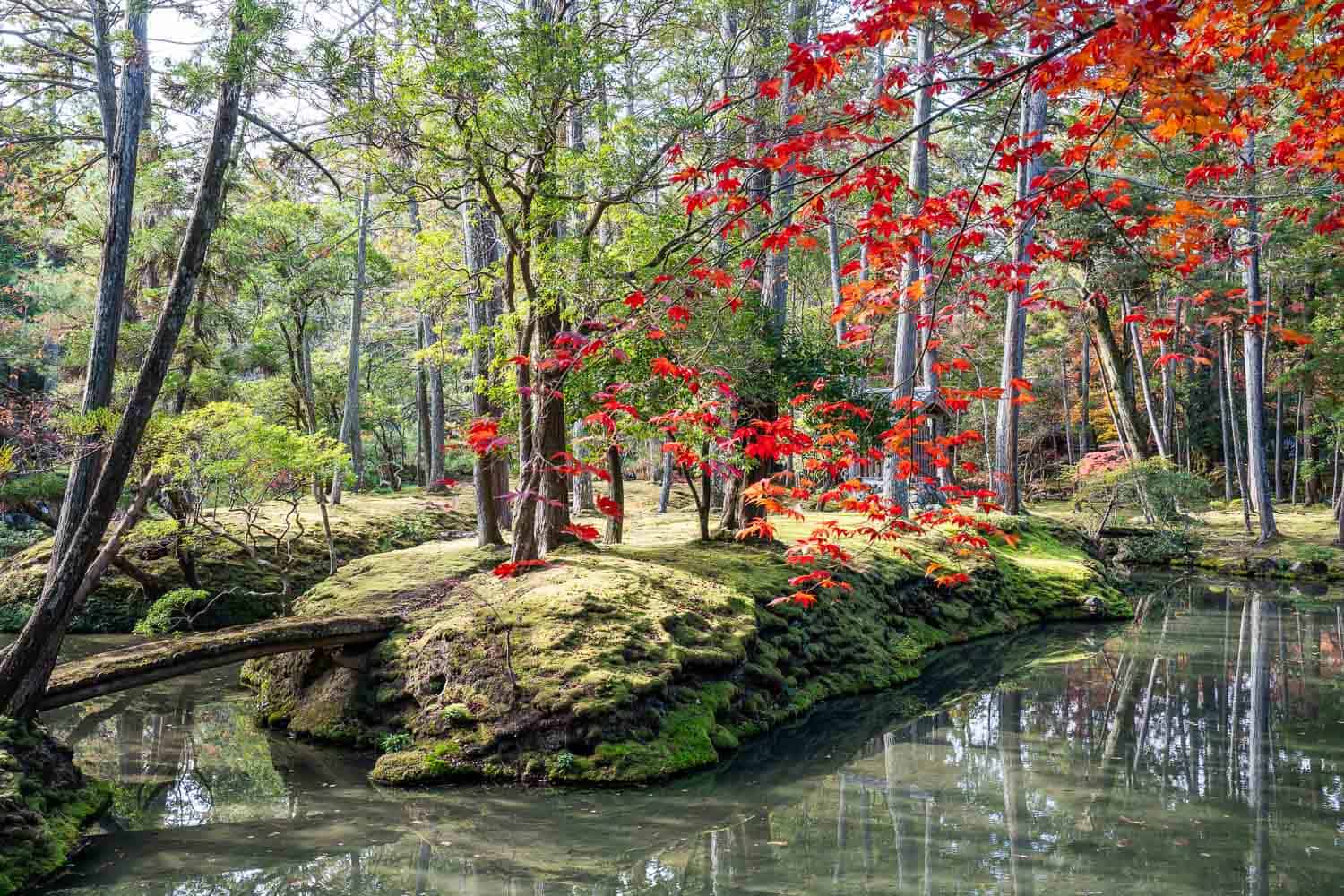

The reflections in the pond and the picturesque stone bridge leading to the moss-covered island add to the magic.
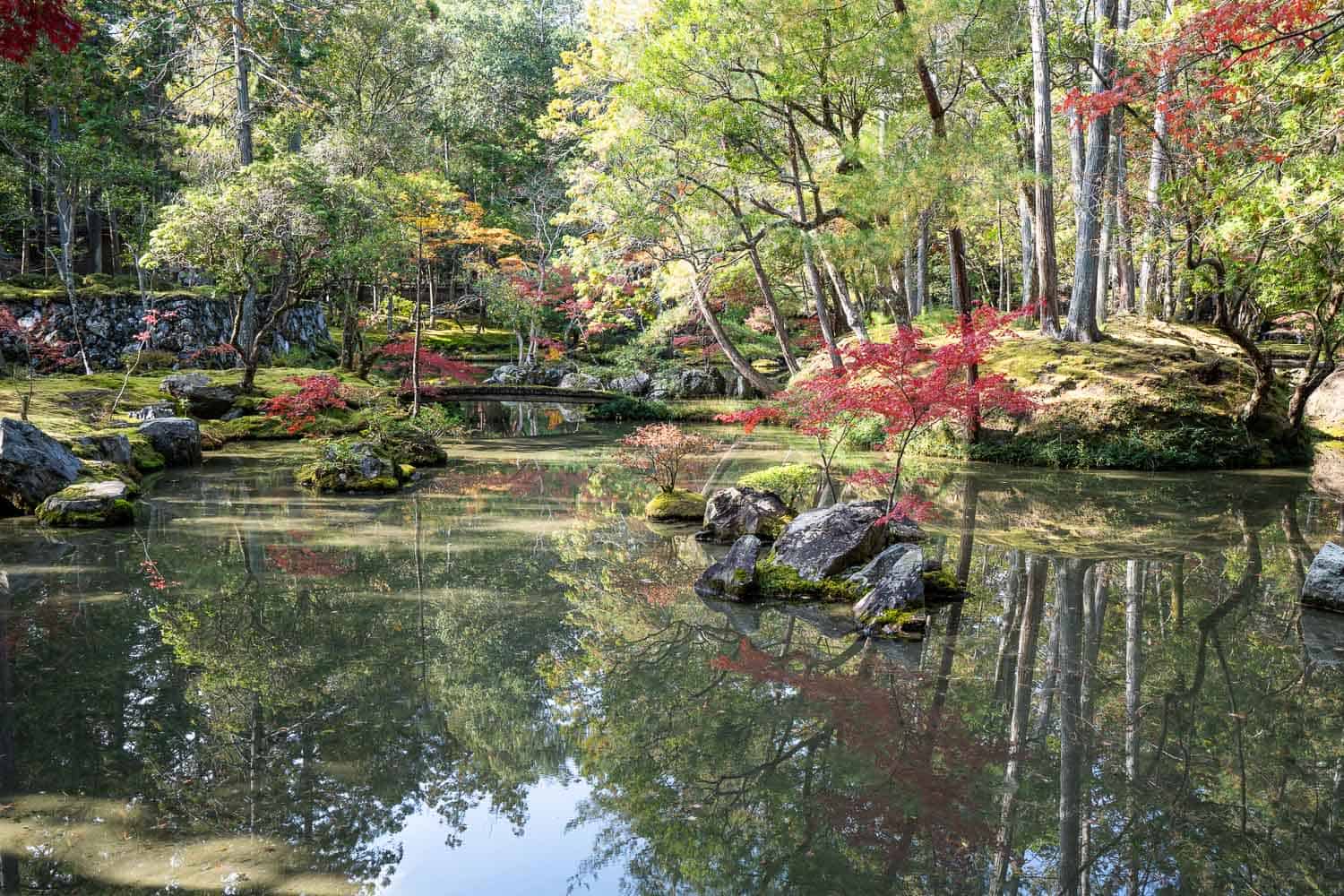

An old rowing boat reminded us of the time when the shogun came by boat to visit the gardens.
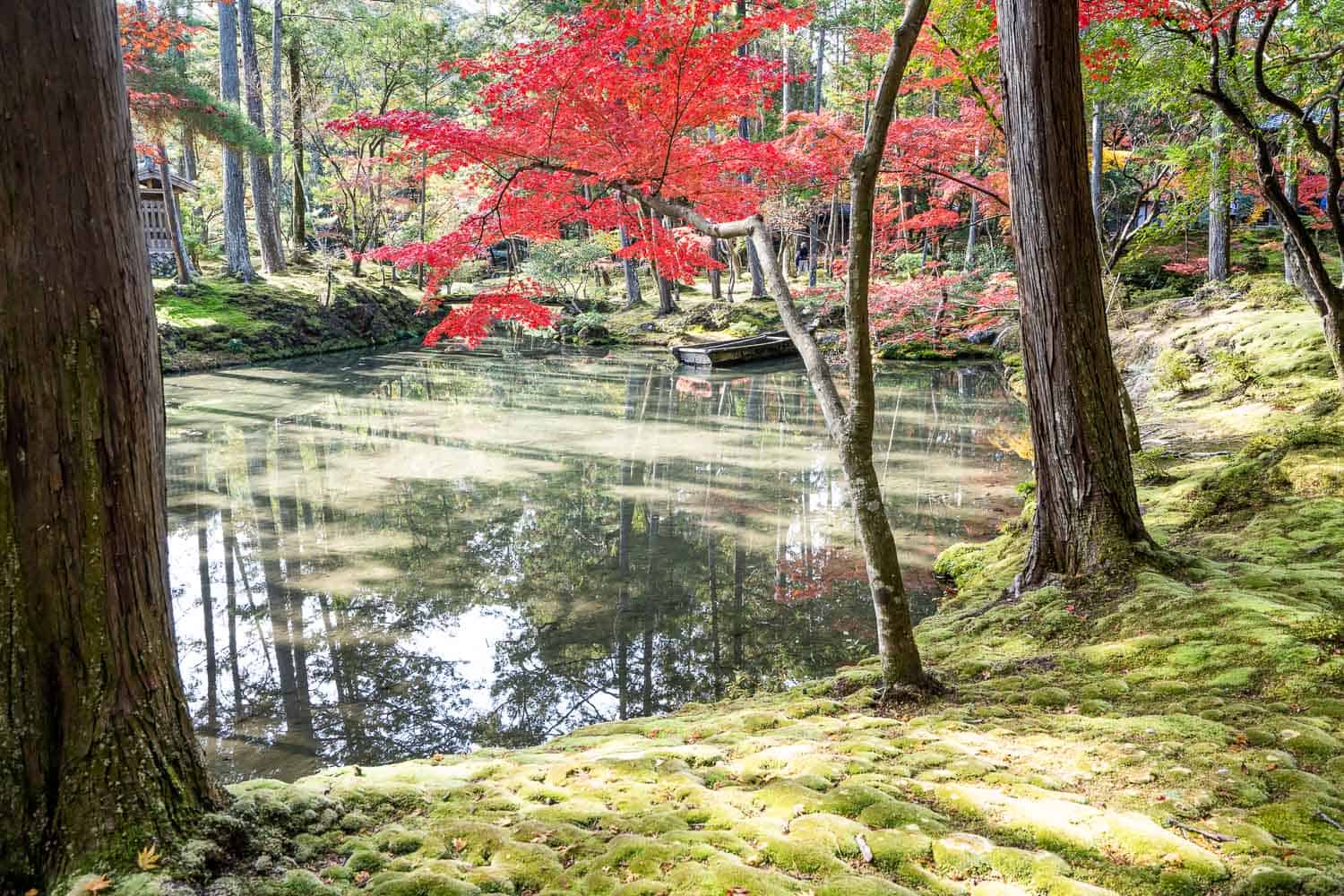

There are some old teahouses (no longer in use) in the gardens, but the experience is more about nature than architecture.
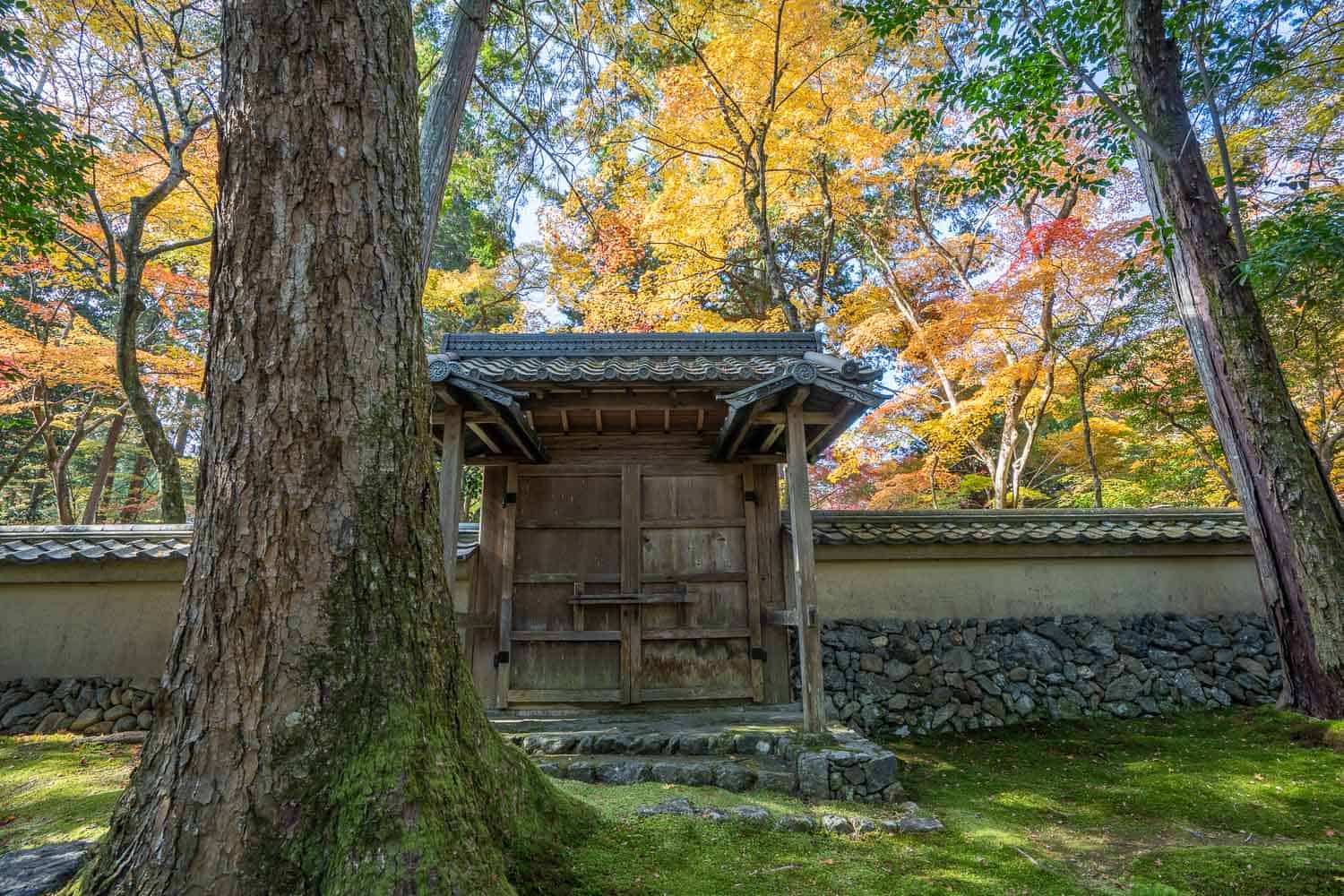

We loved the moss garden so much that we walked around the pond a second time, this time without taking any photos, just admiring all the details.
How long does it take to spend at Saihoji Temple?
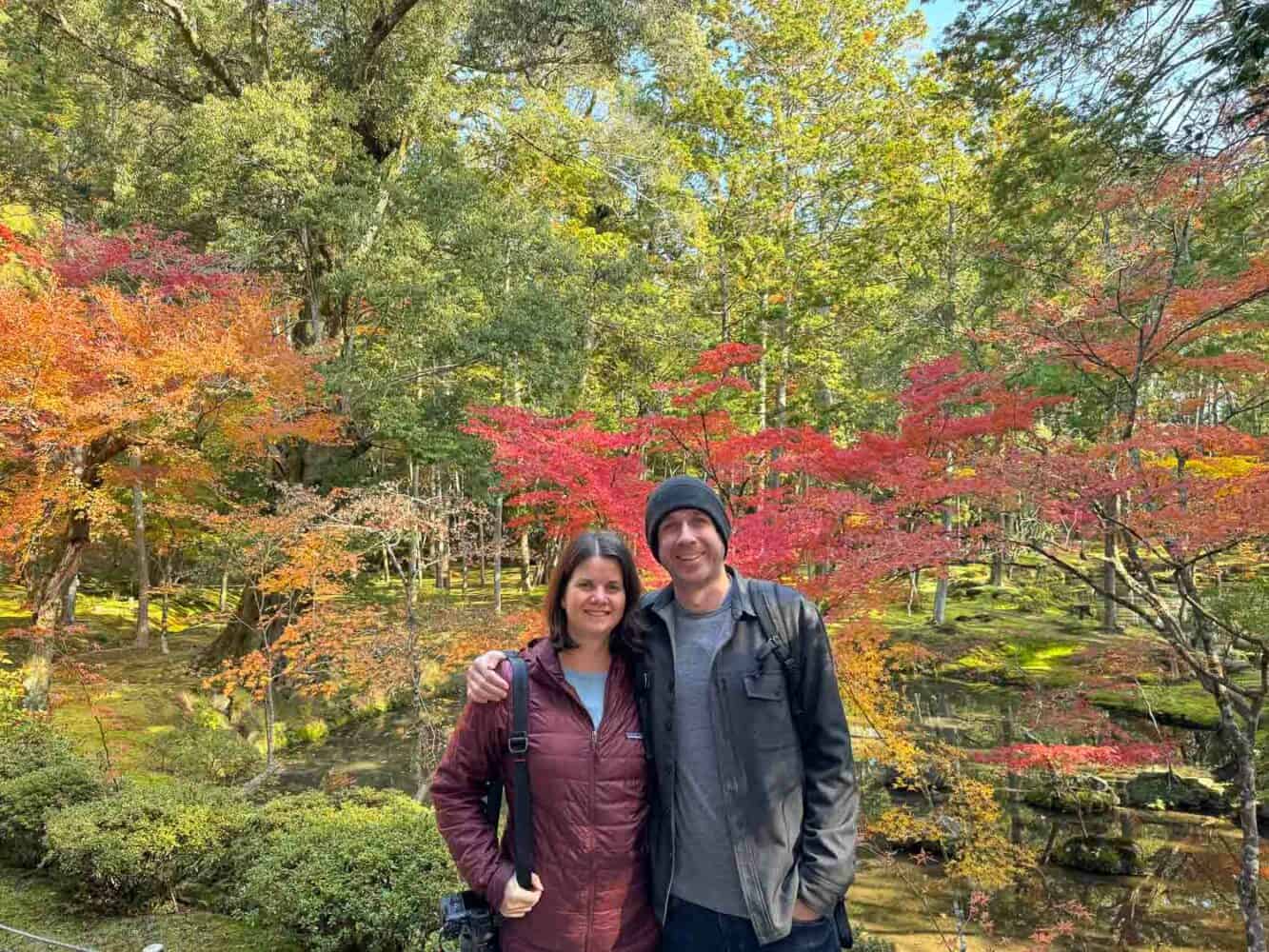

We stayed at Xibao Temple for 1 hour and 15 minutes, which was enough time to complete the sutra painting and two laps around the garden.
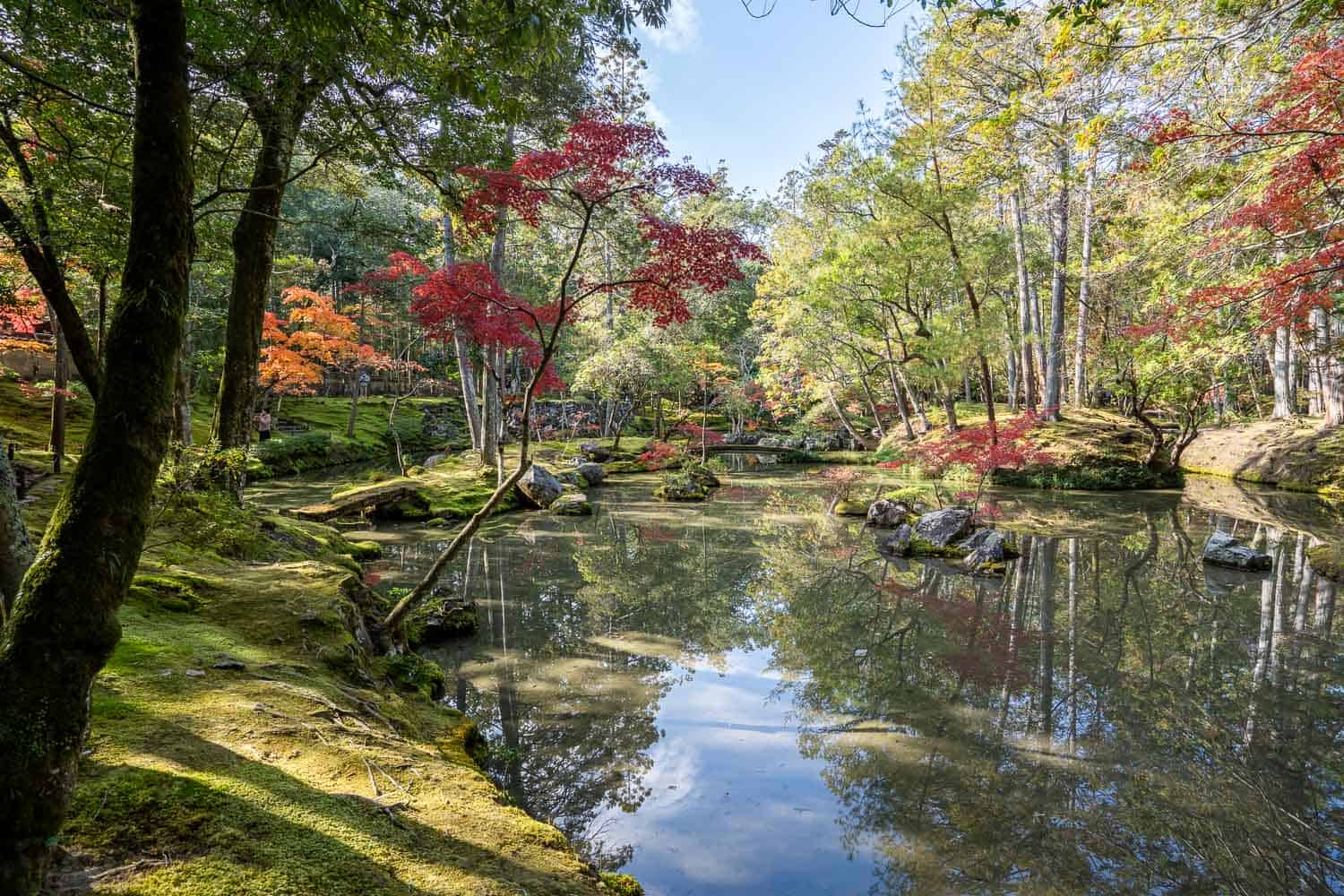

You can take longer if you want to stay with your copying for a while or find a quiet place to meditate.
Best time to visit Saihoji Temple
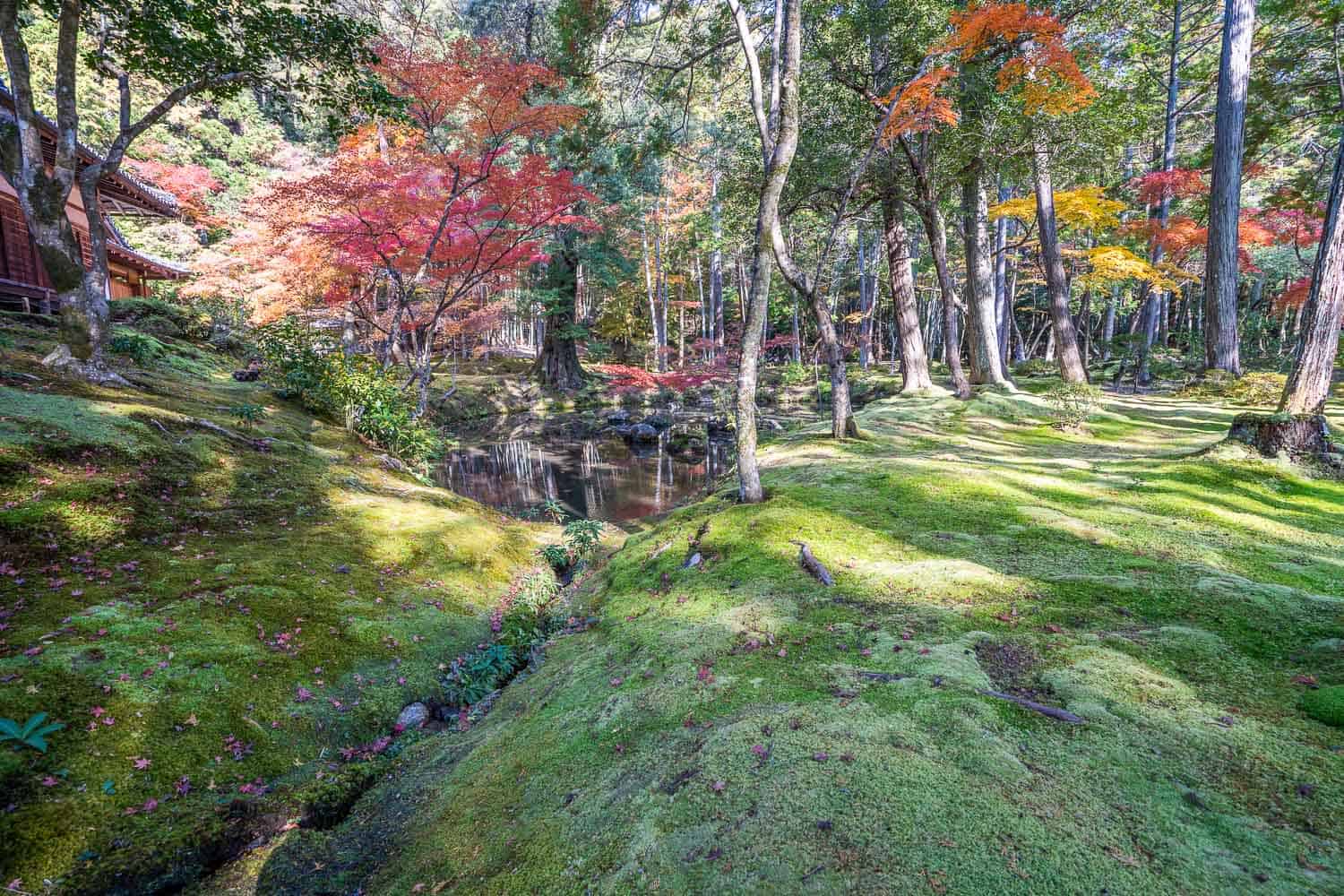

Saihoji/Kokedera can be visited at any time of the year, except mid-January to February, when the gardens are closed to visitors for rest.
The best time to visit Saihoji Temple is during or after the rainy season from June to mid-July, when the moss is at its greenest.
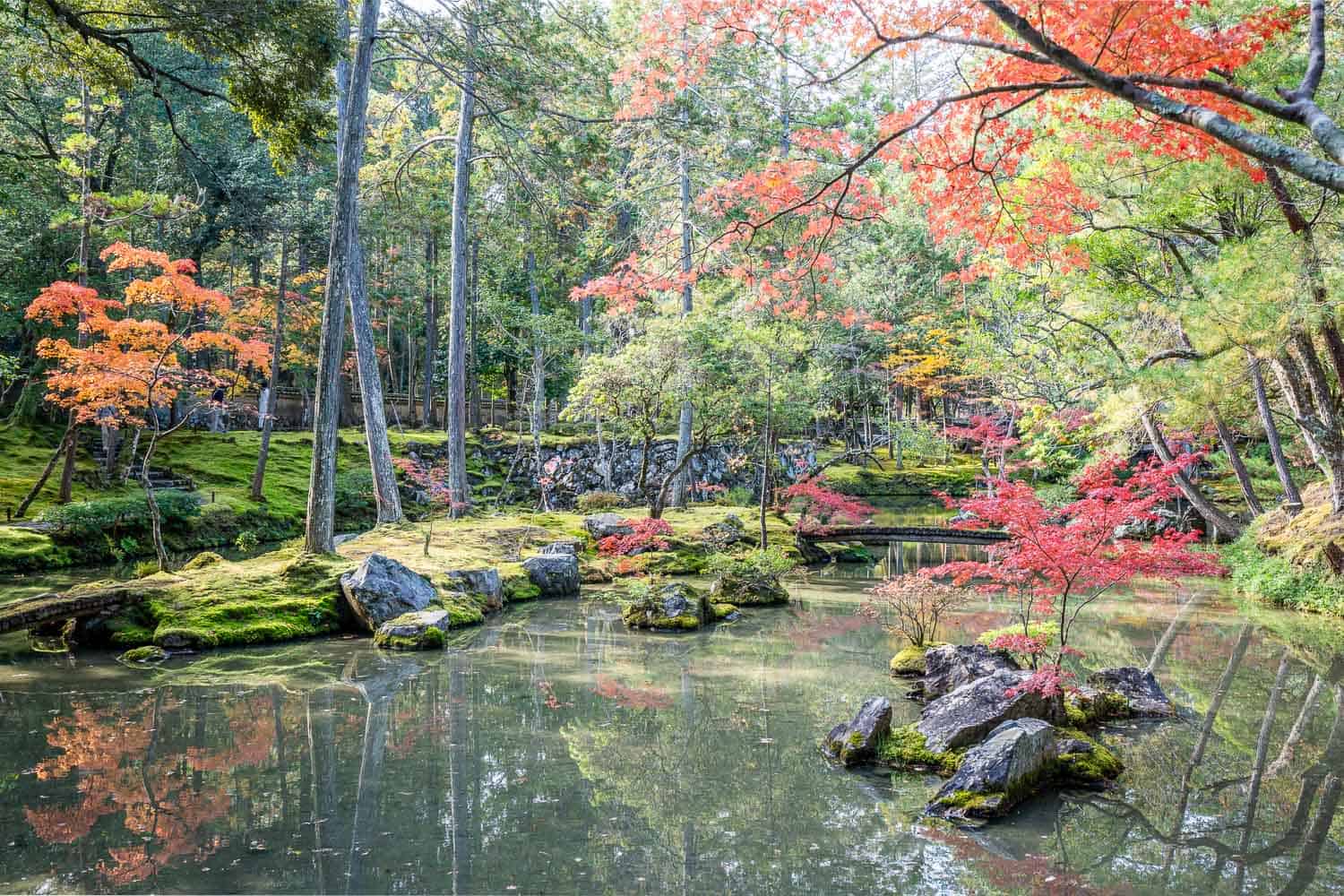

We went at the end of November, during the peak season. Autumn in Kyotoit was wonderful to see the contrast of the garden with the red maple trees. I highly recommend it, but be sure to book two months in advance.
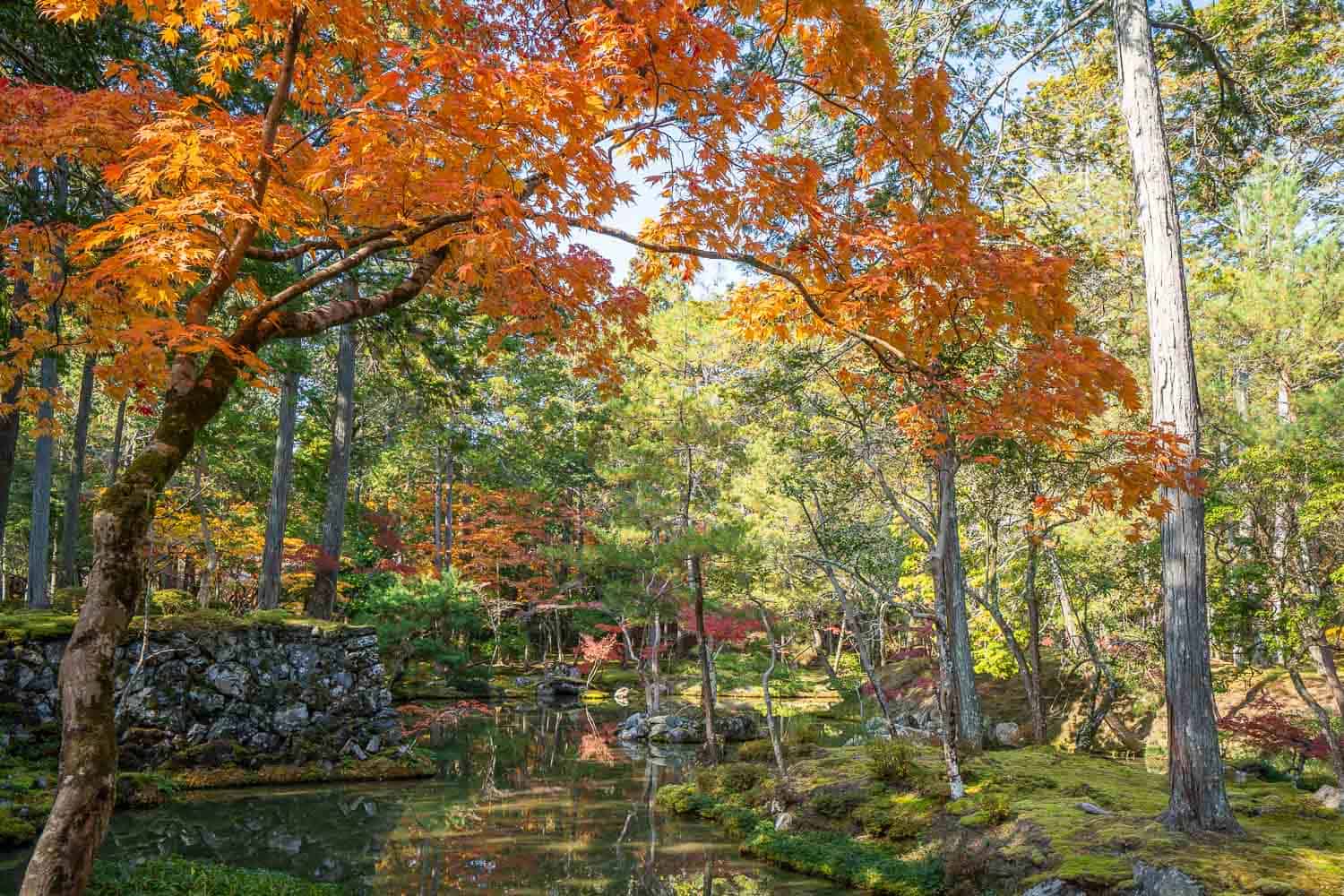

The winter and spring moss is a dull green, but I still think it’s worth a look.
Is Saihoji Temple worth visiting?
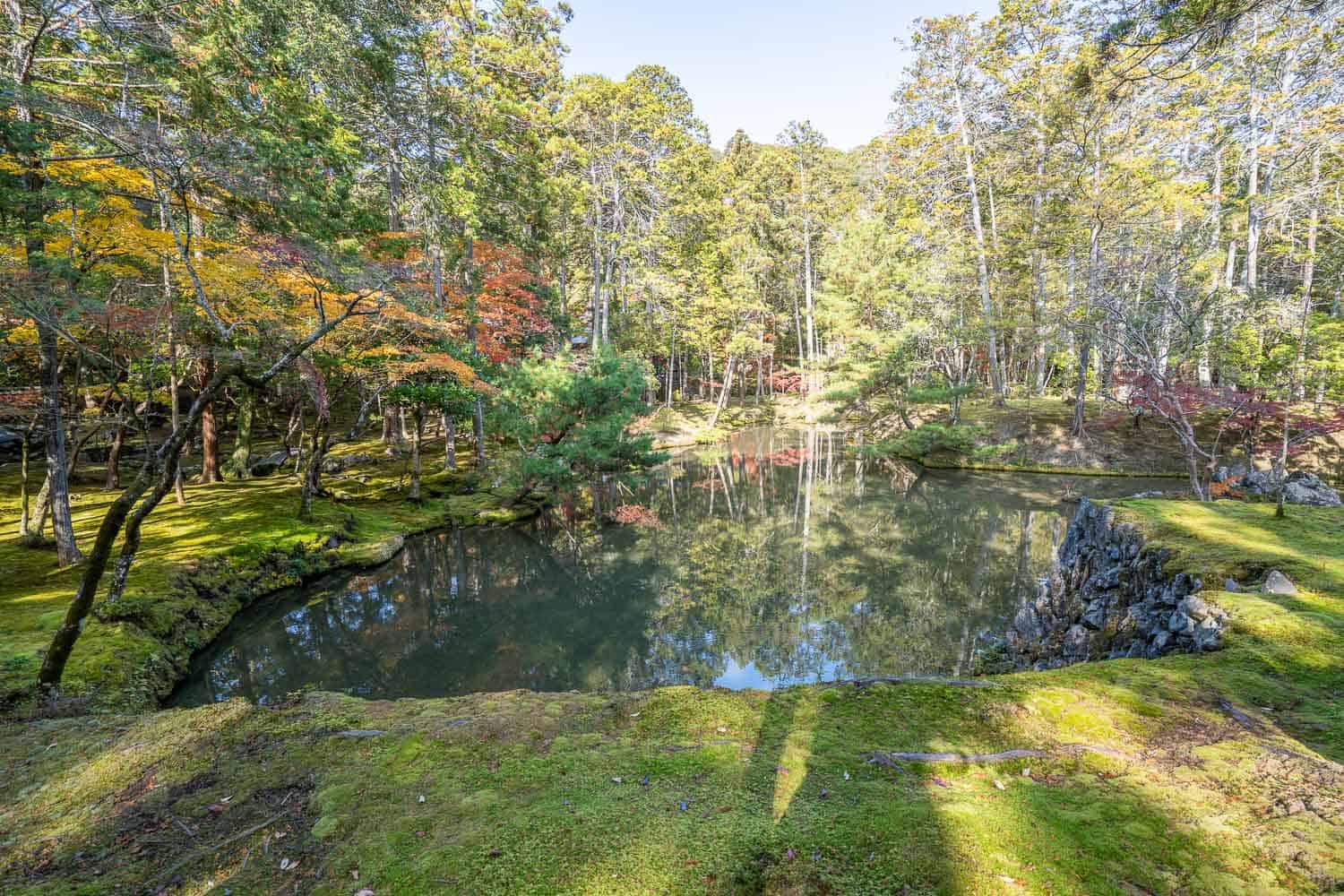

Saihoji Temple or Kyoto Moss Temple is the most expensive temple in the city and it is quite far from the center of Kyoto, but for us it was definitely worth a visit.
It is now our favorite temple garden in Kyoto. It’s an amazing place with few crowds and a peaceful atmosphere not often found in popular spots in Kyoto.
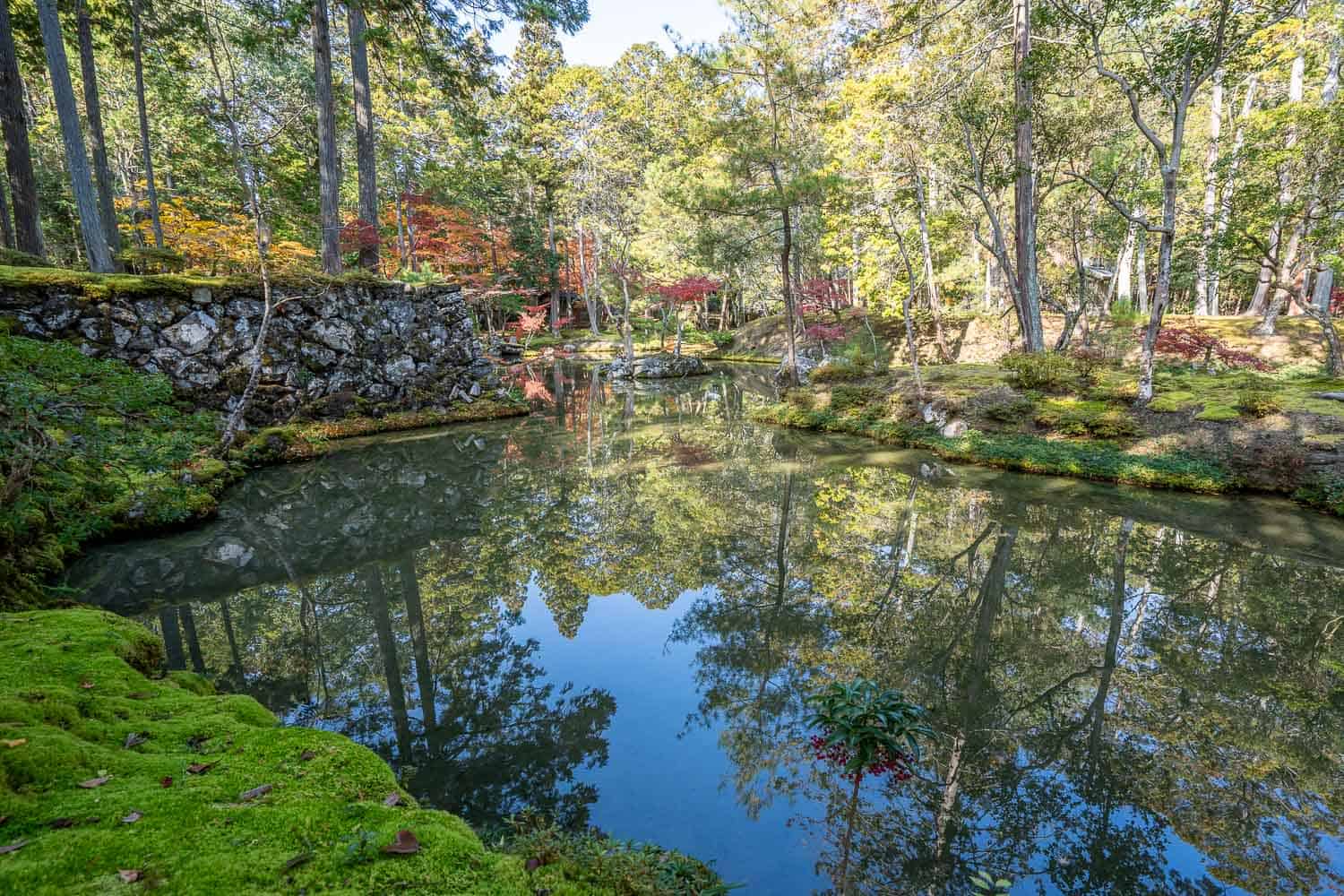

Zuohuo Temple is not the place to see the stunning temple architecture, but if you like gardens and want a unique, quieter experience, it’s well worth saving your spot.
More Japan Posts
Kyoto
Rest of Japan
If you liked this article, please pin it!
